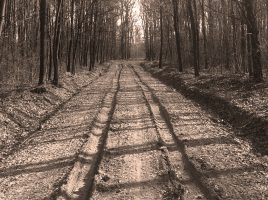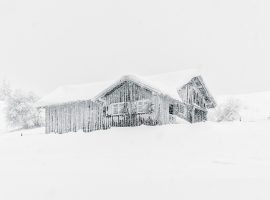By George Rose – Calgary, Alta.
Being a train engineer was a cinch compared to being a fireman during the steam engine days. My train, on which I was the fireman, had arrived at Fox Valley, Sask. from Empress, Alta. in the evening and the crew was called on at 4 a.m. to switch boxcars at Leader, Sask.
On the way we stopped at Pivit, which wasn’t a town in Alberta, but a coal loading depot where we took on about 12 tons of coal for the hopper.
This is a grain growing area, so the main job was to drop off empty cars and pick up loads of grain. Sometimes there were cattle cars, but mostly wheat was in those train cars. From Leader, the road hungry ‘hoghead’ (which was the nickname for an engineer) and the conductor asked for another route.
So back to Pivit we went to pick up another 12 tons of coal and on to Schuler, my hometown, where at that time there were four grain elevators. When the CPR took out the tracks, the elevators were all taken down.
We were back at Empress by four the next morning. After shovelling 24 tons of coal in 24 hours I booked a four-hour rest.
‘Get a desk job’
The engineer was very annoyed because he now had his hours in. He wanted to take the train back to Swift Current, where he would catch another train to Medicine Hat where he lived. Then, he could have a two-day rest before his time came up again.
His remark to me was: “If you want to work this job then work it! If you can’t take the pressure, get a desk job.” He didn’t intimidate me and much to his annoyance, I kept my allowed four hours’ rest.
This engineer had naps along the way while I was doing the shovelling. When there was a straight stretch of railroad, he’d put his toolbox on the brake and take a small nap.
The weight of the toolbox was like the pressure of his foot that kept the brake from coming on so it kept the engine running. The next time I was paired off with this engineer, it was payback time.
The brakeman and I used the poker to get the coals red hot and I put in an oily rag. When it was smoldering we put it under the sleeping engineer’s chair. He woke up coughing. We played innocent, but he never slept again on my watch.
Job got easier
Diesel engines came in 1957 and the fireman’s job was much easier, because he just acted as co-pilot for the engineer and kept watch on his side of the engine. He looked for problems such as animals or vehicles on the track.
I became an engineer in 1969 and enjoyed a number of years of being the Hoghead, but not a cantankerous one – and I didn’t take naps.
By 1987, I was driving the passenger train from Calgary to Medicine Hat. I’d have a sleep, then drive another train back to Calgary with a day of rest, then from Calgary through the scenic mountains to Field, B.C.; have a sleep, and then back to Calgary.
This was my routine for a number of years until the government took this beautiful southern route off line.
In 1991, I had the privilege and sadness of bringing the last eastbound passenger train from Field into Calgary. I retired after 41 years with the Canadian Pacific Railroad.



